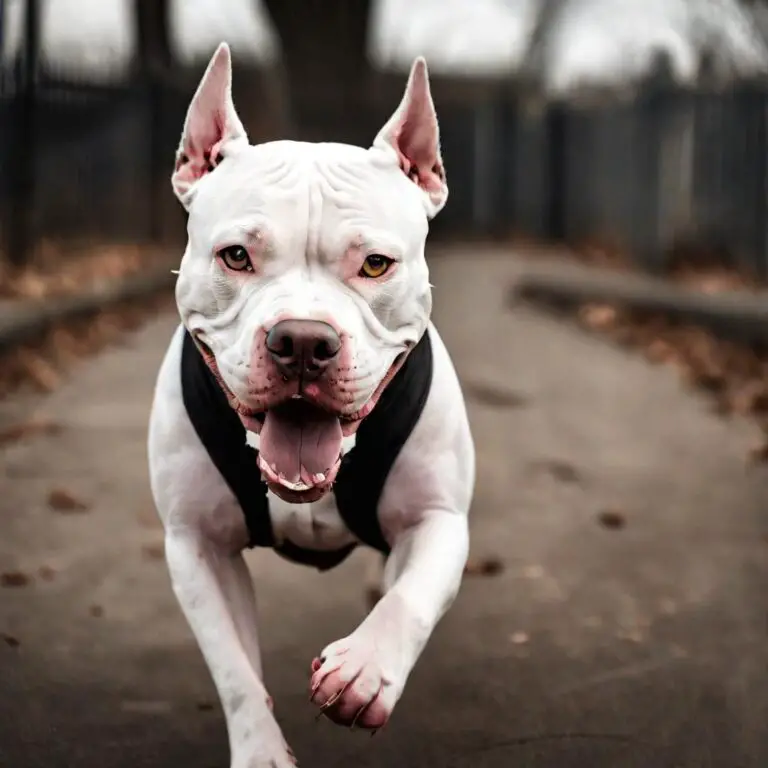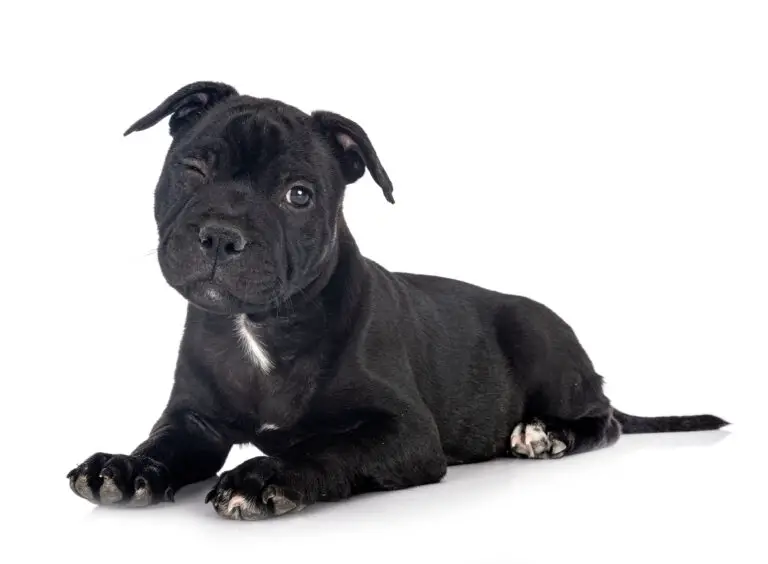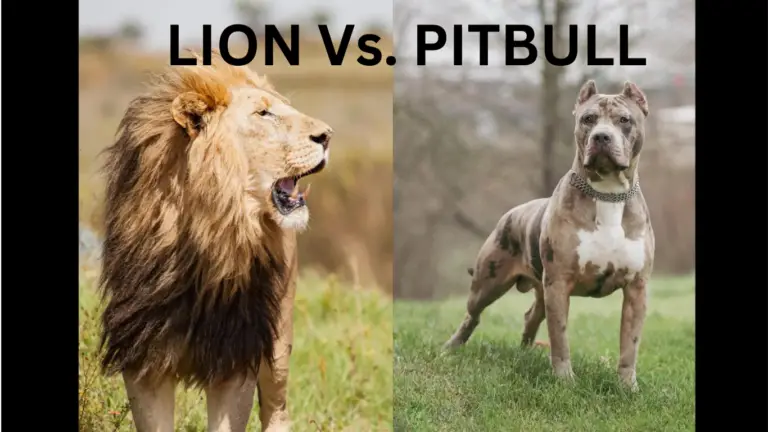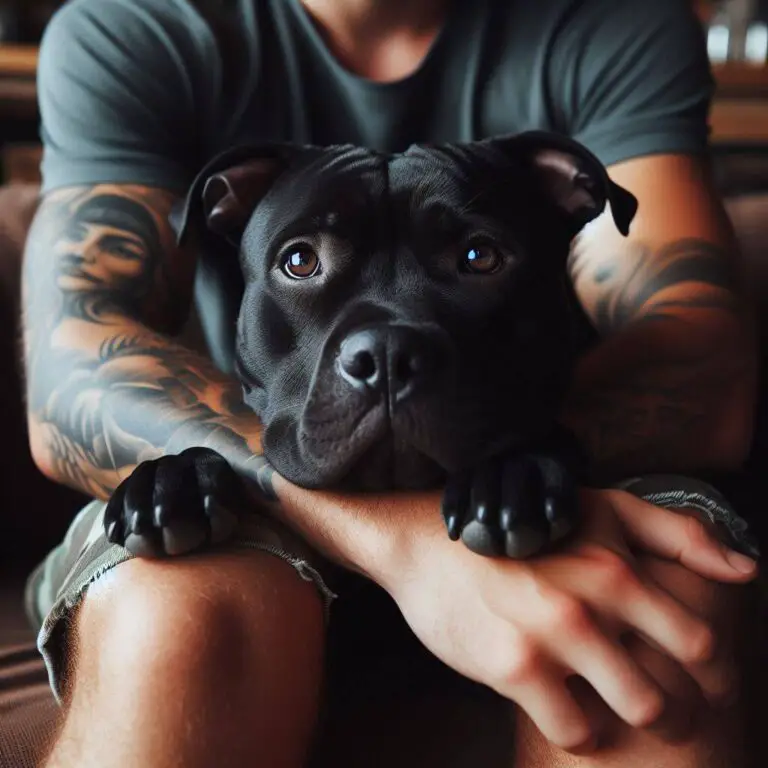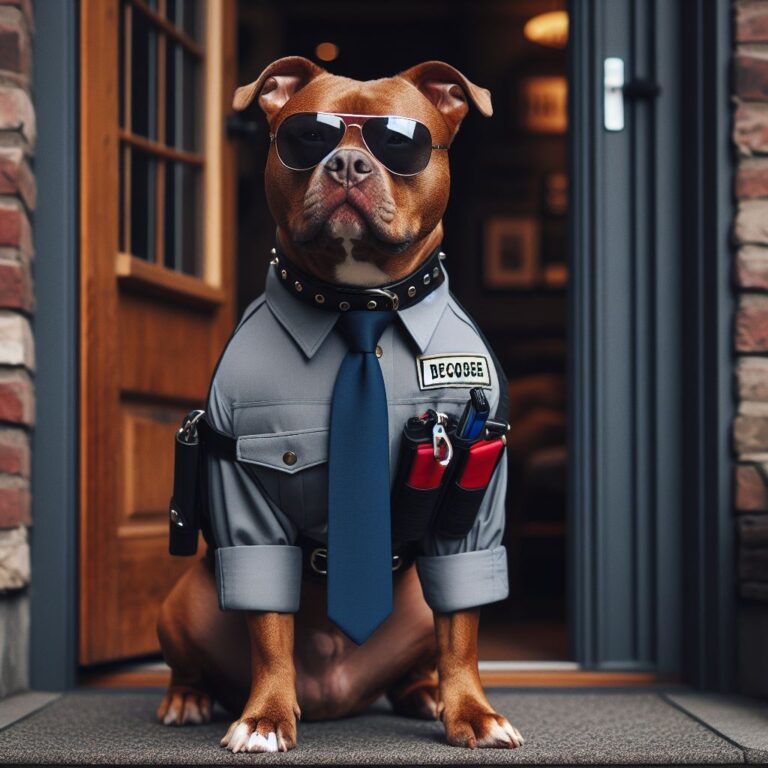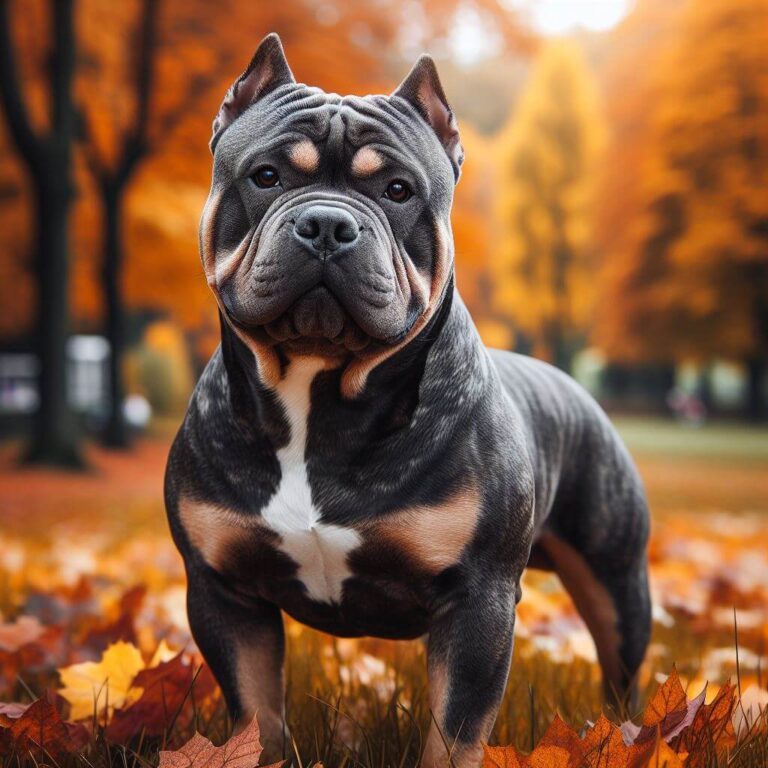How To Potty Train A Pitbull Puppy: Tips and Tricks
Intro
If you’re a new owner of a Pitbull puppy, potty training can be a challenging task. However, with the right understanding of their behavior and needs, preparation, and training techniques, you can set your furry friend up for success. This comprehensive guide provides specific tips and tricks for potty training, including establishing a routine, using positive reinforcement, and monitoring progress. Additionally, the article addresses common pitfalls in potty training and provides tips for avoiding them. By following these guidelines, you can help your Pitbull puppy become a well-behaved and obedient adult.
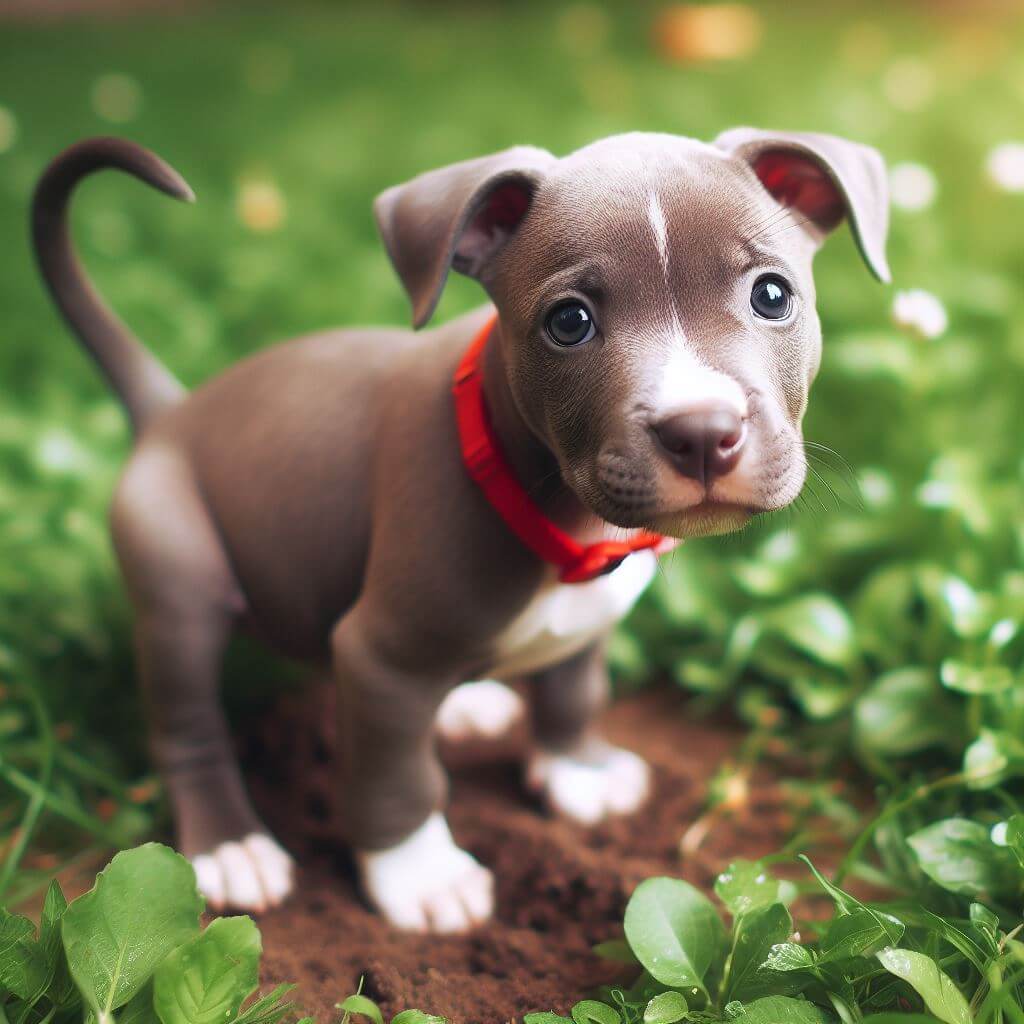
Understanding Pitbull Puppies
If you’re a new Pitbull puppy owner, it’s essential to understand the breed’s behavior and needs to ensure a smooth potty training process.
Here are some things you should know about Pitbull puppies:
Pitbull Puppy Behavior
Pitbull puppies are energetic and playful. They love to explore and play with their toys. However, they can also be stubborn and independent, which can make potty training a bit challenging. Pitbull puppies are also highly social and love being around their owners and other pets.
Pitbull Puppy Needs
Pitbull puppies have specific needs that must be met to ensure they grow into healthy and well-behaved adults. Here are some of their needs:
- Exercise: Pitbull puppies need regular exercise to burn off their excess energy. Take them for walks, play fetch, or let them run around in a fenced yard.
- Nutrition: Pitbull puppies need a balanced diet to support their growth and development. Feed them high-quality dog food that meets their nutritional needs.
- Training: Pitbull puppies need consistent and positive training to learn good behavior and obedience. Use positive reinforcement techniques such as treats and praise to encourage good behavior.
- Socialization: Pitbull puppies need to be socialized with other dogs and people to prevent fear and aggression. Take them to puppy classes, dog parks, and other social events to expose them to new experiences.
Understanding your Pitbull puppy’s behavior and needs is essential for successful potty training. With patience, consistency, and plenty of positive reinforcement, you can help your Pitbull puppy become a well-behaved and obedient adult.
Preparing for Potty Training
Before you begin potty training your Pitbull puppy, there are a few things you should do to prepare. This will help you to be successful in your training and make the process smoother for both you and your pup.

Choosing the Right Time
The first step in preparing for potty training is to choose the right time to start. You want to make sure that your puppy is old enough to control their bladder and bowels, but not too old that they have already developed bad habits. Generally, puppies are ready to begin potty training when they are around 12 weeks old.
It’s also important to choose a time when you can devote enough time and attention to the training process. This means that you should avoid starting potty training during a busy time in your life, such as when you’re moving or starting a new job.
Gathering Necessary Supplies
Once you’ve chosen the right time to start potty training, you’ll need to gather the necessary supplies. This includes:
- Puppy pads or newspaper
- A crate or playpen
- Treats for positive reinforcement
- A leash and collar or harness
- Cleaning supplies for accidents
You may also want to consider getting a bell to hang on your door to help your puppy signal when they need to go outside.
By preparing for potty training ahead of time, you’ll be able to set yourself and your Pitbull puppy up for success. With the right timing and supplies, you’ll be on your way to successfully potty training your furry friend.
Establishing a Routine
When it comes to potty training your Pitbull puppy, establishing a routine is key. Consistency is crucial in helping your puppy learn where and when to go potty. In this section, we’ll discuss two important aspects of establishing a routine: a feeding schedule and potty breaks schedule.
Feeding Schedule
Establishing a regular feeding schedule for your Pitbull puppy can help regulate their digestive system and make it easier to predict when they will need to go potty. Here are some tips for setting up a feeding schedule:
- Feed your puppy at the same time every day. Aim for 2-3 meals per day, depending on your puppy’s age and activity level.
- Use high-quality puppy food that is appropriate for your puppy’s breed and size.
- Measure out the appropriate amount of food for your puppy’s age and weight. Follow the guidelines on the food packaging or consult with your veterinarian.
- Avoid free-feeding or leaving food out all day. This can make it harder to predict when your puppy will need to go potty.
Potty Breaks Schedule
In addition to a regular feeding schedule, it’s important to establish a regular potty breaks schedule for your Pitbull puppy. Here are some tips for setting up a potty breaks schedule:
- Take your puppy outside to go potty first thing in the morning, after meals, and before bedtime.
- Take your puppy outside every 2-3 hours during the day, or more frequently if they are younger or have had accidents.
- Choose a designated potty area outside and take your puppy there every time. This will help them associate that area with going potty.
- Use a consistent command, such as “go potty”, to help your puppy understand what you want them to do.
- Reward your puppy with praise and treats immediately after they go potty outside.
By establishing a routine for feeding and potty breaks, you can help your Pitbull puppy learn where and when to go potty. Remember to be patient and consistent, and don’t give up if there are setbacks along the way. With time and practice, your puppy will become a potty training pro!
Training Techniques

Positive Reinforcement
When it comes to potty training your Pitbull puppy, positive reinforcement is a great technique to use. This involves rewarding your puppy for good behavior, such as going potty outside. When your puppy goes potty outside, give them a treat or praise them with a happy tone of voice. This will help them associate going potty outside with positive experiences.
It’s important to note that you should only reward your puppy immediately after they go potty outside. If you wait too long, they may not understand what they’re being rewarded for. Additionally, make sure to use small, bite-sized treats as rewards to avoid overfeeding your puppy.
Consistency and Patience
Consistency and patience are key when it comes to potty training your Pitbull puppy. It’s important to establish a routine and stick to it. Take your puppy outside to go potty at the same times each day, such as after meals or naps.
If your puppy has an accident inside, do not punish them. Instead, calmly clean up the mess and take them outside to finish going potty. Punishing your puppy can cause fear and anxiety, making potty training more difficult.
Be patient with your puppy, as accidents are bound to happen. It may take several weeks or even months for your puppy to fully understand where they should go potty. Stay consistent with your training and continue to use positive reinforcement to encourage good behavior.
Handling Accidents
When potty training your Pitbull puppy, accidents are bound to happen. It’s important to handle them correctly to prevent setbacks in the training process.
Accident Prevention
The best way to handle accidents is to prevent them from happening in the first place. Here are some tips to help prevent accidents:
- Take your puppy outside frequently, especially after meals, naps, and playtime.
- Use a consistent command, such as “go potty,” to help your puppy understand what you want them to do.
- Keep your puppy on a leash when outside to prevent them from getting distracted and wandering off.
- Supervise your puppy closely when inside and interrupt any signs of sniffing or circling, which may indicate they need to go potty.
- Consider using a crate or confinement area when you can’t supervise your puppy.
Post-Accident Steps
If your puppy does have an accident, it’s important to clean it up properly to prevent lingering smells that may encourage them to go potty in the same spot again. Here are the steps to take:
- Use a paper towel to blot up as much of the urine or feces as possible.
- Use an enzymatic cleaner specifically designed for pet accidents to clean the area thoroughly.
- Avoid using ammonia-based cleaners, as they can actually attract your puppy to go potty in that spot again.
- If your puppy has soiled their bedding or crate, remove it and wash it with an enzymatic cleaner as well.
- Don’t punish your puppy for the accident; this will only confuse and scare them. Instead, focus on preventing future accidents through consistent training and supervision.
By following these steps, you can handle accidents effectively and continue making progress in potty training your Pitbull puppy.
Monitoring Progress
Once you have started potty training your Pitbull puppy, it is essential to monitor their progress. This will help you identify any areas where your puppy is struggling and make necessary adjustments to your training plan.
Here are a few tips for monitoring your Pitbull puppy’s progress:
Keep a Potty Log
One of the best ways to track your puppy’s progress is to keep a potty log. This log should include the time your puppy went potty, the location, and whether they went pee or poop. By doing this, you can identify patterns in your puppy’s behavior and adjust your training plan accordingly.
Watch for Signs
It’s important to watch for signs that your puppy needs to go potty. These signs may include sniffing around, circling, or whining. By recognizing these signs, you can quickly take your puppy outside and reinforce the desired behavior.
Celebrate Successes
When your puppy successfully goes potty outside, be sure to celebrate their success. This can include giving them a treat, verbal praise, or a belly rub. Celebrating successes will help reinforce the desired behavior and encourage your puppy to continue to go potty outside.
Adjust Your Training Plan
If you notice that your puppy is struggling with potty training, it may be time to adjust your training plan. This could include changing the location of the potty area, adjusting the frequency of potty breaks, or using a different type of reinforcement.
By monitoring your Pitbull puppy’s progress and making necessary adjustments, you can ensure that they are successfully potty trained in no time.
Common Pitfalls and How to Avoid Them
Potty training a Pitbull puppy can be a challenging task, but it is essential for their well-being and your household’s cleanliness. However, there are some common pitfalls that you should be aware of to avoid any setbacks in the process. Here are some tips to help you avoid these pitfalls:
Inconsistency
One of the most common pitfalls in potty training is inconsistency. If you are not consistent with your training, your Pitbull puppy will not understand what is expected of them. Be sure to establish a routine and stick to it. Take your puppy out to potty at the same times each day, and use the same commands to indicate what you want them to do.
Punishing Your Puppy
Punishing your Pitbull puppy for accidents is another common pitfall. Scolding or hitting your puppy will only make them afraid of you and may cause them to hide their accidents instead of learning from them. Instead, use positive reinforcement to encourage good behavior. Praise your puppy when they go potty in the right place and give them treats as a reward.
Not Using the Right Cleaning Products
Accidents will happen, even with the best potty training. However, using the wrong cleaning products can be a pitfall. If you do not clean up accidents thoroughly, your puppy may continue to go potty in the same spot. Use an enzymatic cleaner specifically designed for pet accidents to eliminate odors and stains.
Giving Up Too Soon
Potty training takes time and patience. Giving up too soon is a common pitfall that can set back your progress. Remember that your Pitbull puppy is still learning, and accidents will happen. Stick to your routine and be consistent with your training. With time, your puppy will learn where to go potty and what is expected of them.
By avoiding these common pitfalls, you can make the potty training process smoother and more successful for both you and your Pitbull puppy.
Conclusion
In conclusion, potty training a Pitbull puppy can be challenging, but with the right understanding, preparation, and techniques, it can be a rewarding experience for both the puppy and the owner. Positive reinforcement, consistency, and patience are key to success, and monitoring progress and avoiding common pitfalls can help make the process smoother and more successful. By following the tips and guidelines in this article, you can help your Pitbull puppy become a well-behaved and obedient adult.
FAQs
What are some effective methods for potty training a Pitbull puppy?
Effective methods for potty training a Pitbull puppy include establishing a consistent routine, taking them outside frequently, using positive reinforcement, creating a designated potty area, and supervising them closely indoors. Consistency and patience are key, as it may take several weeks or even months for a puppy to fully grasp the concept of potty training.
How often should I take my Pitbull puppy outside to go potty?
It is recommended to take your Pitbull puppy outside to go potty every 1-2 hours, as well as after meals, naps, playtime, and any other activities that may stimulate their need to go. As they get older and gain better bladder control, you can gradually increase the time between potty breaks.
What are some common mistakes to avoid when potty training a Pitbull puppy?
Common mistakes to avoid when potty training a Pitbull puppy include punishing them for accidents, not establishing a consistent routine, not supervising them closely enough, not using positive reinforcement, and not being patient. Punishment can cause fear and anxiety, making the training process more difficult. Consistency, positive reinforcement, and patience are key to successful potty training.
How can I encourage my Pitbull puppy to use a designated potty area?
To encourage your Pitbull puppy to use a designated potty area, you can use positive reinforcement by rewarding them with treats and praise when they use the area. You can also make the area more appealing by using a specific scent or texture, and consistently taking them to the same spot each time will help them associate it with going potty.
What are some signs that my Pitbull puppy needs to go potty?
Signs that your Pitbull puppy needs to go potty include sniffing or circling around a specific area, whining or barking, pacing or restlessness, and suddenly stopping playing or engaging in other activities. It’s important to pay attention to your puppy’s behavior and take them outside immediately when you notice these signs to prevent accidents indoors.
Is crate training helpful for potty training a Pitbull puppy?
Crate training can be helpful for potty training a Pitbull puppy, as it provides a safe and secure space for them to rest and sleep, and can also help with bladder control. However, it’s important to not leave them in the crate for extended periods of time and to gradually increase the amount of time they spend in the crate to prevent anxiety and stress.


